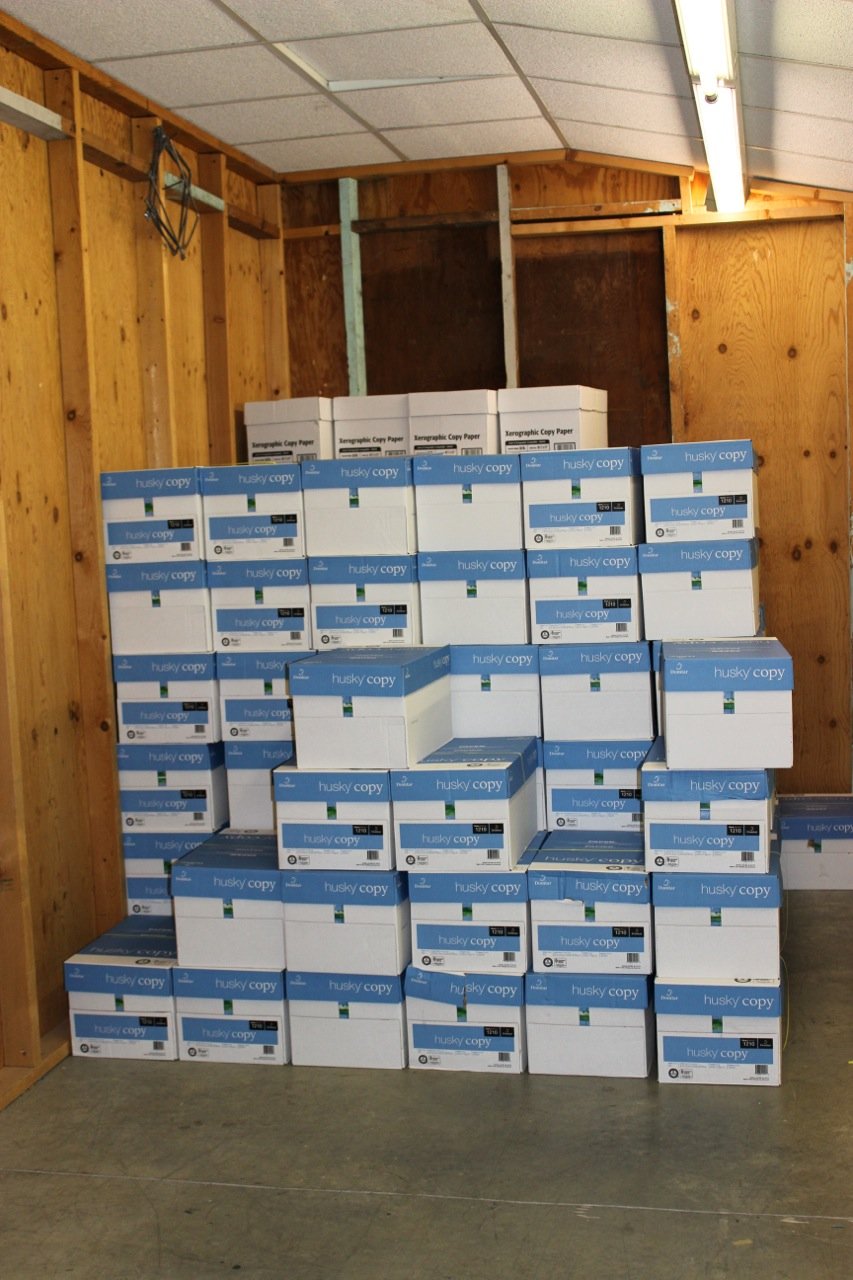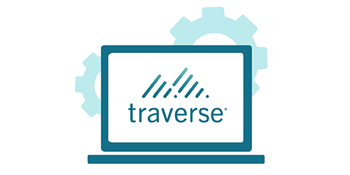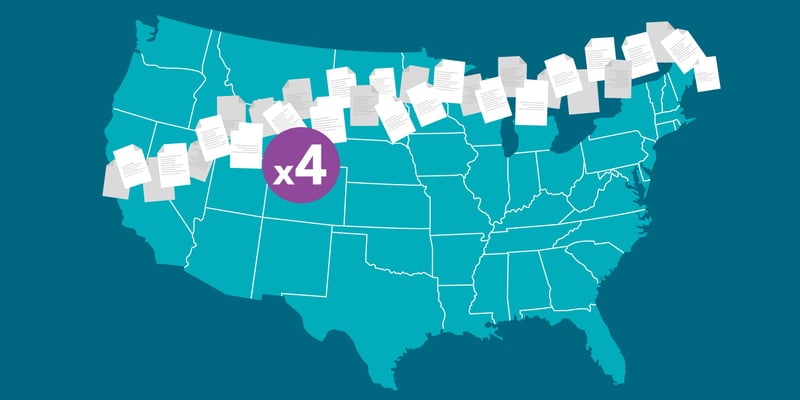Cars. Coffee. Computer chips. Ketchup. There’s no shortage (pun intended) of items that have been hard to find, or more expensive to buy, over the past few months due to global supply chain disruptions that have resulted from COVID-19 and other factors.
But there’s one thing that human services agencies should be keeping an eye on as it could significantly impact your operational budget over time: paper and printing supplies.
When you think about the paper shortage, images like these might come to mind:
 |
 |
But what started as empty shelves where toilet paper should be has evolved into something much bigger. Commercial printing companies, retailers, and booksellers are among the industries feeling the burn as production prices surge, supply orders are delayed, and processes are disrupted. And if you work for a human services agency that still heavily relies on paper and printing, you may soon feel the burn too. So, what’s more worrisome are images like these:
 |
 |
 |

What Could the Supply Shortage Mean for Your Agency?
First, consider the impact on your bottom line.
Let’s say your agency prints 600,000 pages per month at a cost of $0.05 per page (this would translate to roughly 40,000 Medicaid/temporary assistance applications or permanency plans at 15 pages each, although we know some are much longer). This would cost $30,000 per month or $360,000 annually.
If the cost per copy goes up just one cent (so $0.06 per copy) as a ripple effect of supply chain issues, that cost would increase to $36,000 per month or $432,000 annually—a difference of $72,000.
And that’s just printing. Think about envelopes, hardware, and all the other things that are becoming more expensive too and you’ll see just how much it could cost your agency to keep up with your paper-based systems and processes. Assuming you don’t have that extra cash lying around, you may have to pull budget away from other more valuable expenditures to cover the bill instead.
Even if money isn’t an issue, consider how a paper shortage could ultimately delay clients from getting the help they need. Let’s use referral forms as an example. What if your agency temporarily runs out of paper because you're struggling to keep supplies stocked?
Completing referrals is already challenging when you rely on paper because you have to hand off the physical form so many times to finalize it. Now, the client will be even more delayed receiving the services they need because you lack a copy of the form to start the process. (We’ve heard from a couple of agencies that triplicate forms have been impossible to find for months. They’ve gotten creative by filling out the form on regular paper, taking a photo of it to keep in the case file, and leaving the hard copy behind for the client. However, this is not an ideal long-term solution!)

Why Else Should Human Services Agencies Go Paperless?
Of course, your budget is just one of many reasons why human services agencies should go paperless. Here are a few more examples:

Productivity
Once information enters the agency, how many steps or handoffs are necessary before it’s verified and stored?
If you still rely on paper, it’ll require multiple workers, multiple steps, and a lot of manual effort to get all this information in the same place.
Just think how much time you could repurpose if a modern, electronic system was in place that streamlined and automated these processes instead. This would also minimize duplicate work (think recreating documents that are too cumbersome to find or collecting the same information multiple times) that’s all too common in a paper-based world.
Access
Caseworkers need to access clients’ information instantly, simultaneously, and from anywhere—something that’s next to impossible when relying on paper.
With paper, only one person has access to each file at a time (unless there are duplicate copies, which causes additional problems), which greatly slows down workers’ ability to move cases forward. Plus, files are difficult to access outside the office if they’re sitting on a caseworker’s desk or filed away in a storage room.
A digital solution, on the other hand, allows caseworkers to instantly access accurate, up-to-date, quality client records from anywhere.
Information overload
Every piece of content in a case file has the potential to contain critical information, but it gets buried deeper and deeper in the file as more new information gets added. It could take hours or even days to find information when you have to search through lengthy paper case files.
By converting paper files into ones that are digital, organized, and searchable, workers can more easily find the information they need when they need it, plus digest and apply it when making and supporting critical decisions.
Security
When you rely on paper, there’s an increased risk that a worker might accidentally lose a physical form or file or leave it behind after a client visit that’s outside the office. (Beyond its security implications, this can also delay the workers’ ability to move a case forward if they have to go out to get a new version of the form signed again.)
Reputable digital solutions will have advanced security and privacy measures built in to keep your files and sensitive client information safe.
Storage
We’ve visited agencies where ceilings are close to caving in because the boxes of paper stored in the file room above are so massive and heavy. We’ve heard horror stories of fire and flood damage, mold issues, and other hazards. Could you imagine the implications if years of case information literally went up in flames? Or the amount of time it would take to reconstruct thousands of client files if everything came crashing through the ceiling?
Storing files digitally, especially using cloud-based solutions, would better preserve them while cleaning up some much-needed space in the office. (Less spending on storage: another thing that could positively impact your budget!)
Compliance
The more manual your documentation and paperwork processes, the more prone your agency becomes to inefficiencies and human errors that make it difficult to demonstrate you’re meeting mandates and requirements (think incomplete files, missing documents, or conflicting information). This could lead to a failed audit, fines, or improvement plans.
On the other hand, when you have complete, accurate, and accessible digital documentation to prove compliance, you can minimize these potential legal and financial risks.

Ready to Go Digital? Here's How Northwoods Helps
The good news? Technology exists to minimize all these paperwork problems. Quickly getting a solution in place will not only help you navigate the paper and supply shortage, but also reap the additional benefits described above.

Traverse®, Northwoods’ cloud-based, commercial off-the-shelf (COTS) document management, forms management, and mobility solution, was purpose-built for human services agencies, especially those that have historically relied on paper and manual processes.
Here are some ways it helps:
- Productivity. Workers using Traverse save 2 hours per day on administrative tasks. They can repurpose that time to focus on high-value, client-centric work.
- Access. Traverse provides secure and reliable cloud-based access to case information from anywhere and allows multiple people to work on the same file simultaneously.
- Information overload. Workers can filter case content by date or content type to quickly find and retrieve what they need. Child welfare workers can also uncover hidden or buried information to quickly understand major life events and critical history.
- Security. Powered by Amazon Web Services (AWS), Traverse has you covered on security, disaster recovery, and uptime. Northwoods adheres to industry best practices and SSAE-18 standards, plus we regularly audit our security and privacy policies and controls.
- Storage. We partner with AWS to store customers’ data in secure cloud environments. We leverage dedicated provisioning, FedRAMP-compliant and HIPAA-compliant services, and all data is encrypted.
- Compliance. Agency leaders have visibility into operations and worker and client activity to meet timeliness and accuracy goals.
Wondering how we can help you survive the paper and supply shortage? Consider the following:
Over 28 million content items—including documents, photos, audio files, and video files, all of which is historically stored as paper—are currently stored in Traverse. We estimate an average of 2.3 pages per content item, which means it would cost over $3.2 million to print everything at $.05 per page. Furthermore, if you laid out those printed pages end to end, it would equal 11,181 miles—enough paper to cross the United States 4 times!


The pitfalls of paper for human services agencies are nothing new, yet many organizations lack funding, resources, or proper justification to invest in technology and are forced to continue relying on paper-based systems and processes. However, it’s clear that waiting to get a digital solution in place will ultimately cost you more.
Need a compelling reason to justify your request to go paperless? The paper shortage and rising costs resulting from it could be it.
Editor’s note: we know that supply chain issues can also make certain hardware like tablets and scanners difficult (or expensive) to get your hands on right now. Another reason to start planning ASAP so that you can get a digital solution in place as quickly as possible once you’re ready! Please reach out if Northwoods can provide guidance to help you navigate the planning and buying process.
Lauren Hirka, product manager, Laura Haffield, manager—solution analysts, and Jon Eakins, director of Compass® solutions, all contributed to this post. This trio has spent countless hours helping human services agencies across the country go paperless and realize the potential of cloud technology.

